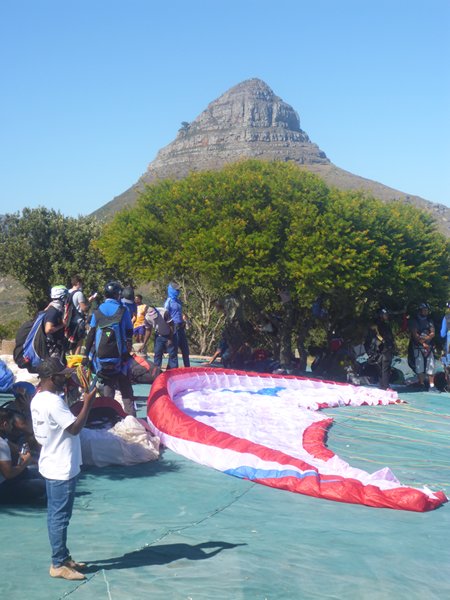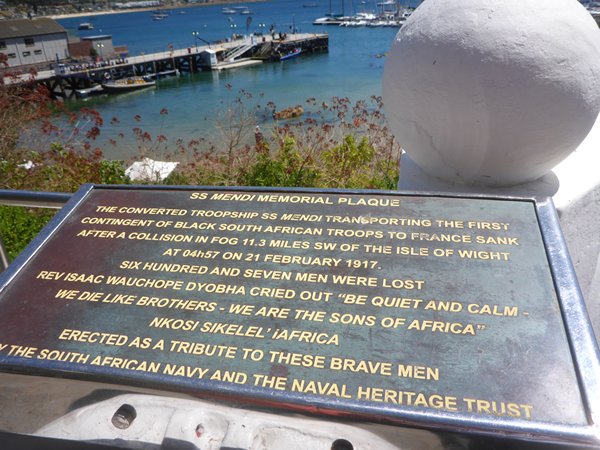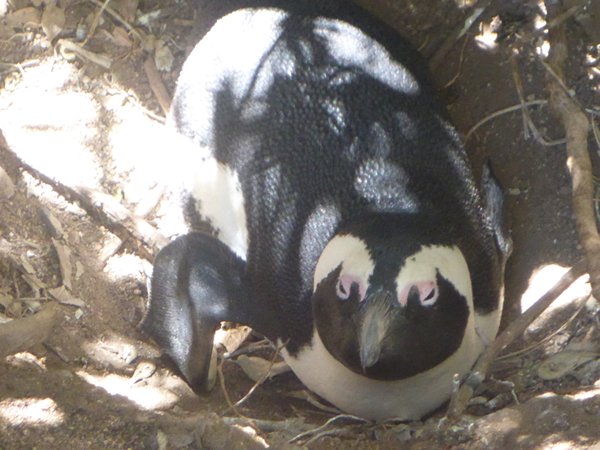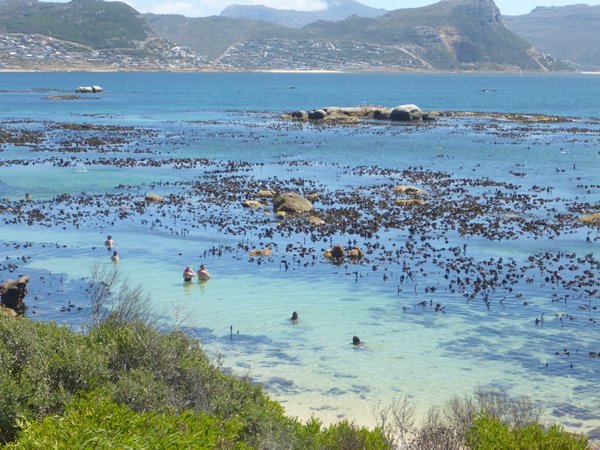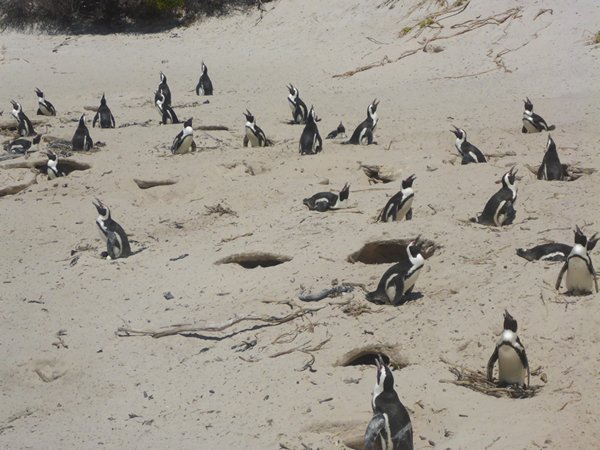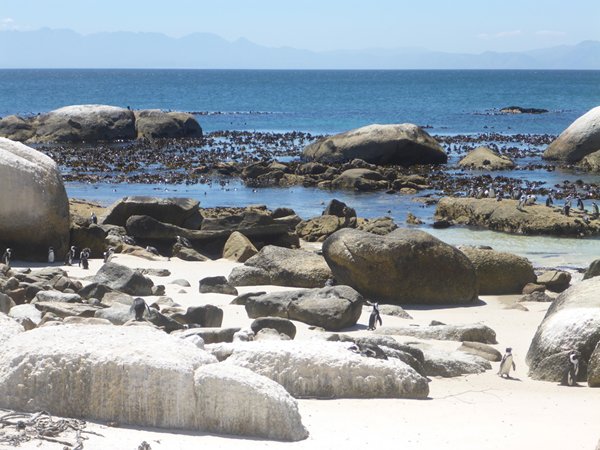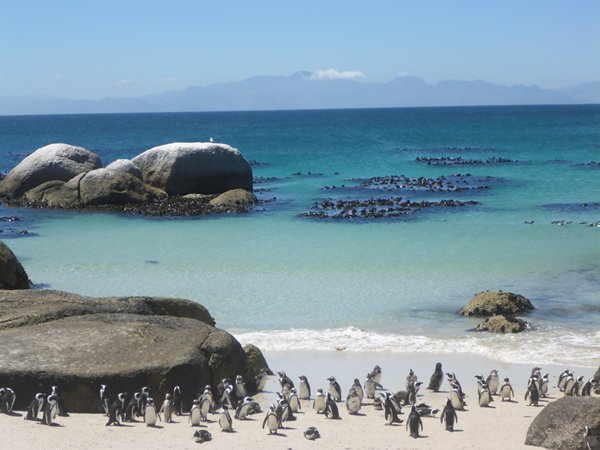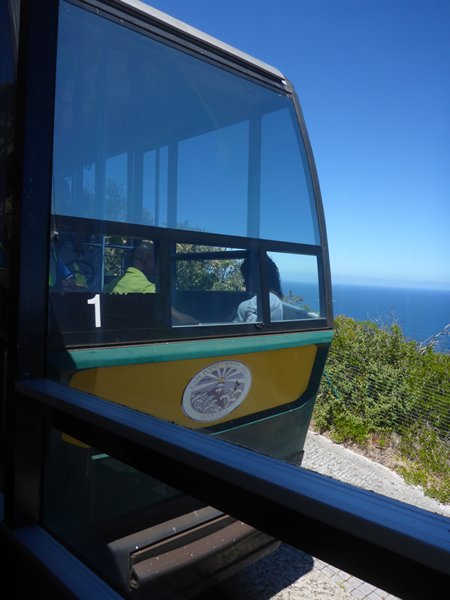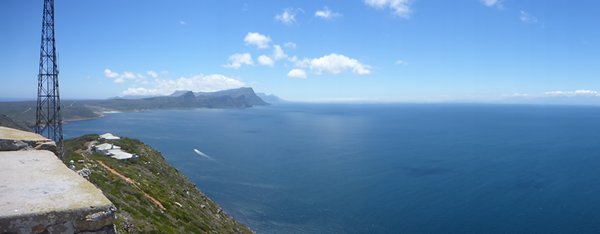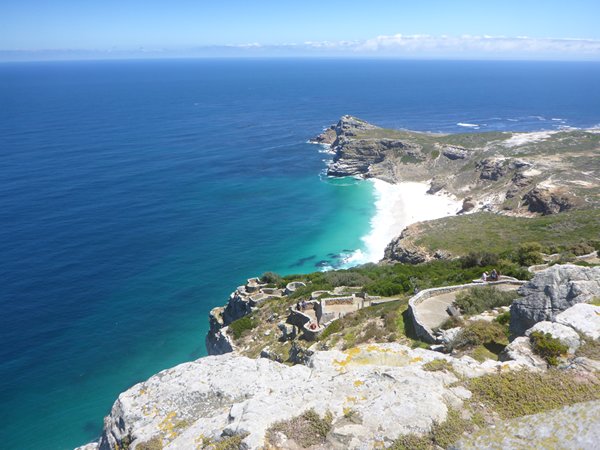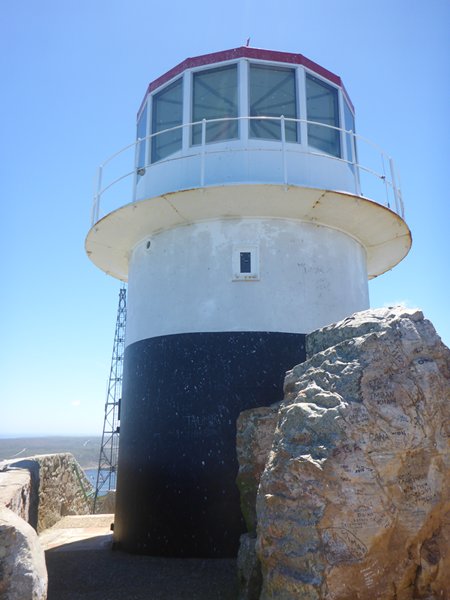Dedicated Penguins and to The Old Cape Point Lighthouse

|
Dedicated Penguins And The Old Cape Point Lighthouse Setting off with our friend Brian on a tour of the Cape Peninsula our first stop was on Signal Hill near the Lion’s Head, where keen hang gliders were waiting for the opportunity to take a running jump; a term which had other connotations when I was a teenager with an older brother. What was stopping them on this day was the cotton wool carpet of fog that lay over the ground below and far out to sea, so that all we could see of the anchored ships was the hundreds of containers resting on their pure white quilt. The coast-hugging road around the Cape affords the most incredible, mind stopping views as the road clings tenaciously to the rocks or swans smoothly around sandy bays and through seasonally choked villages which for us, because of Covid restrictions, were not busy. We looked down on Fish Hoek Bay to the pretty little fishing harbour reminiscent of a Cornish counterpart and got out of the car at Simon’s Town to see the marina in which Marjolein and Henk were aboard Jori. A sad reminder of home came in the form of the plaque paying tribute to the 607 men aboard SS Mendi who lost their lives in a collision in fog off the Isle of Wight, where I lived for nine years and visited frequently as a child. I remember reading about how a young Winston Churchill sat overlooking the same waters and watched in horror as a sail training ship foundered on rocks and sank with heavy loss of young trainees. The sea is not discerning, just like Covid. The rocky Boulders Beach has been cleverly arranged with stout wooden walkways and fencing to keep people as separate from the local colony of African Jackass Penguins as the endangered penguins wish. Back in 1982 there were just two breeding pairs, now there are over 2000 because of restrictions placed on the fishing of pelagic fish, pilchards and anchovies in False Bay where the beach is situated. Quite what affect the destructive visiting Asian trawlers are having in this part of the peninsula I am not sure. We walked along the boardwalk to Foxy Beach and right up to the wooden fence there were penguins nestling in hollows under the shady indigenous bush, nursing their eggs. On the upper part of the beach, above the high water mark you can see the dedicated penguins on or near the hollows containing their eggs, panting in the heat of the day; whereas their partners were down on the cooler sand near the waters edge taking dips to cool off, as were lots of human families in the neighbouring bays. We sped on to Cape Point and took the funicular up to the old black and white banded lighthouse that was built in 1859, commissioned the following year and replaced in 1919. There are three prominent headlands in this area rising to over 200 metres at Cape Point, where we were. In the penultimate photo you can see The Cape of Good Hope is the furthest south west headland, then next to it and just before Dias Beach is Cape Maclear. So it is understandable that being the highest land, Cape Point is where the tourist activities are including the walks out to both lighthouses, the funicular railway, shop and Two Oceans Restaurant where we had lunch as you will see later; while the famous Cape of Good Hope is the most significant geographically for the mariner as he clears it to turn on his/her onward journey just as we did. (A seal is just thumping Zoonie’s hull as I type this, splashing and writhing in the water around us).
|
